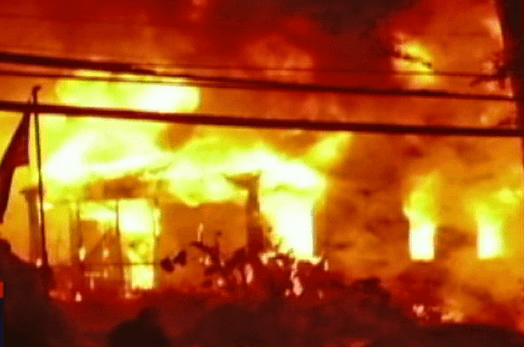
Island residents are smoking hot about Voice Link
The New York Public Service Commission has extended the deadline for public comments about the Voice Link wireless landline replacement until Sept. 13, to give the growing number of customers on Fire Island with the service enough time to fully evaluate it over the summer months.
To date nearly 400 public comments have been filed with the Commission, every one of them negative.
Stop the Cap!’s comments are having an impact on the PSC’s exploration of the deployment of Voice Link in upstate New York. On our recommendation, the PSC has formally asked Verizon for more documentation about how Voice Link is being introduced in the Catskills:
Please provide the following information for all Voice Link devices/services that have been installed at any customer premises locations outside of the Western Fire Island area:
- The address of every Voice Link customer in upstate New York;
- Date Voice Link Installed;
- Reason Voice Link Installed;
- Was customer advised Voice Link service was optional or not;
- Voice Link Service Calls/Repairs identified by location, date, reason for service visit, repair action taken;
- If applicable to any locations, date Voice Link was uninstalled/disconnected and reason for termination;
- Please provide any marketing materials, scripts, and/or training materials in use by Verizon employees or contracted third-party workers to inform customers about Voice Link service;
- Please provide copies of any documentation provided to customers agreeing to accept Voice Link service outside of Western Fire Island, including Terms of Service Agreements. If there are any material differences between documentation and Terms of Service agreements for Western Fire Island customers, and customers in any other areas of New York State, please identify and explain those differences.
The PSC is also demonstrating that it is willing to go deep into the weeds with Verizon on this issue, a marked departure from the near-rubber stamp “light touch” regulation AT&T enjoys in several midwestern and southern states. At one point, the Commission found Verizon documentation indicating enough “spare pairs” — unused lines — were available that could be used to repair and reintroduce landline service on Fire Island, and wants to know why Verizon is not using them to bring back the service customers had before Hurricane Sandy did its damage:
The copper cable table shows that the spare cable pairs in the copper cable facilities serving the 11 identified communities is approximately 16% of the total available pairs in those cables. However, in specific communities such as Fair Harbor, Kismet, Robins Rest and Lonelyville, the percentage of spare pairs ranges from 21% to 66% of the total available pairs. Also, the number of working pairs in many locations is small compared to the total available pairs in the cables, despite the number of defective pairs reported by the company. Please explain why Verizon is not utilizing existing spare cable pairs, and performing routine cable maintenance in any communities, to restore wireline services to customers that do not request or desire Voice Link service.
The fiber cable table shows spare cable pairs in the fiber facilities serving the Ocean Beach, Lonelyville, Fair Harbor and Kismet communities is approximately 73% of the total available pairs in those fiber cables. By individual community, the percentage of spare pairs ranges from 62% to 94% of the total available pairs. Please explain why Verizon is not utilizing existing spare fiber pairs in any of the four named communities to restore wireline services to customers that do not request or desire Voice Link service.
 Despite every effort by Verizon, Fire Island residents that lost landline service are increasingly opposed to Voice Link, if the public comments filed with the Commission are any indication.
Despite every effort by Verizon, Fire Island residents that lost landline service are increasingly opposed to Voice Link, if the public comments filed with the Commission are any indication.
The Point o’Woods Association on Fire Island, which represents more than 500 people who either seasonally or year round depend on Verizon’s landline network, is also highly critical of Voice Link’s performance and provided the Commission with very specific and detailed criticisms:
- Verizon’s only cell site on Fire Island on the Ocean Beach water tower lacks reliable power backup contingencies;
- Fire and medical first responders across Fire Island have declared Voice Link unsatisfactory for public safety;
- Voice Link’s performance has been called unreliable. The sound is “plagued by echoes, connection delays, no connection at all, and frequent dropped calls;”
- Voice Link only works with CDMA spectrum for voice calling, reducing the level of service (data) customers used to have with traditional landlines;
- Customers cannot reach a live operator by dialing “0” and must dial all ten digits for all calls. The service also does not support collect calls, a feature “sometimes critical in emergency situations;”
- The reception quality of Verizon’s data network varies widely across the island.
“Voice Link at its very best is a temporary solution suitable for deployment only while full communications infrastructure is in the process of restoration,” concludes D.R. Brown, vice president of the association.
The changes Verizon seeks for Fire Island are affecting even those who still have landline service. Customers regularly report that Verizon customer service is refusing repair requests in areas like Ocean Beach, pushing customers to the wireless replacement it wants them to accept.
Jean Ufer, a Fire Island resident, says Verizon is threatening the health of her husband by refusing to fix her service.
“They will not repair my landline, which my husband really needs, as he has a pacemaker which has to be monitored by a landline,” Ufer complained to the Commission. “They also refused to connect my DSL, even though they charged me the monthly fee right through the winter.”


 Subscribe
Subscribe

